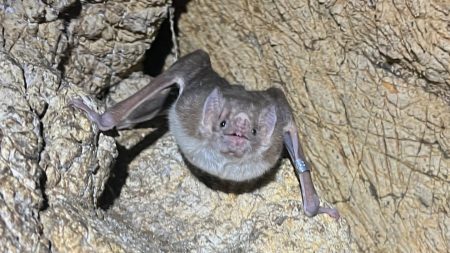Unveiling the Secrets of the Animal Kingdom: A 2024 Retrospective
The year 2024 provided a captivating glimpse into the intricate lives of animals, revealing surprising behaviors, hidden talents, and remarkable adaptations. From the depths of the ocean to the microscopic world of tardigrades, scientific discoveries have expanded our understanding of the diverse strategies animals employ to survive and thrive.
Communication is Key: Beluga whales, the "canaries of the sea," were found to sculpt the fatty melons on their foreheads into distinct shapes during social interactions, suggesting a sophisticated form of nonverbal communication. This discovery opens exciting avenues for research into beluga communication in the wild. Meanwhile, on land, the seemingly whimsical backflips of parlor roller pigeons were traced to a set of specific genes, highlighting the genetic basis of even the most peculiar behaviors. Japanese tits demonstrated a nuanced form of gestural communication, typically observed in primates, using wing flutters to signal their mates. These diverse examples showcase the complex interplay of genetics, behavior, and communication in the animal world.
The Cognitive World of Pets: Man’s best friend continues to surprise us with their cognitive abilities. Studies revealed that dogs exhibit signs of surprise when presented with an unexpected toy, suggesting they form mental representations of objects. This finding challenges previous assumptions about canine cognition and opens up new avenues for understanding how dogs perceive and interact with their world. Not to be outdone, our feline companions also exhibited surprising behavior, with a survey revealing that many cats enjoy playing fetch, although their participation remains entirely on their own terms. These findings highlight the rich inner lives of our pets and the importance of continuing to explore their cognitive landscape.
Ancient Mysteries and Modern Marvels: The extinction of woolly mammoths has long been a subject of fascination and debate. Analysis of mammoth genomes suggests that the last remaining population on Wrangel Island was surprisingly genetically diverse, challenging the prevailing theory of inbreeding as the primary cause of their demise. Instead, evidence points towards a catastrophic natural event as the likely culprit. Remarkably, well-preserved DNA from a 52,000-year-old mammoth allowed scientists to identify active genes from before the animal’s death, offering a unique window into the past. In the present day, the humble honeybee continues to amaze, with studies revealing their uncanny ability to detect lung cancer in human breath. Furthermore, queen bumblebees demonstrated remarkable resilience to flooding during hibernation, surviving submerged for up to a week.
Dramatic Displays and Survival Strategies: Dice snakes employ a dramatic and elaborate death-feigning act to deter predators. Their performance, which involves thrashing, defecation, and feigning bleeding, is a testament to the lengths animals will go to survive. Leaping leeches, captured on video, challenge previous assumptions about their locomotion, raising intriguing questions about their biomechanics and evolutionary adaptations. These observations showcase the diverse and often surprising survival strategies employed in the animal kingdom.
Unexpected Adaptations and Parental Care: The discovery of a milk-like substance produced by ringed caecilians to nourish their young blurs the lines between mammalian and amphibian reproductive strategies. This unique adaptation highlights the convergent evolution of parental care across diverse taxonomic groups. Tardigrades, renowned for their resilience, were found to enter a dormant "tun" state triggered by specific chemical changes in their proteins, a mechanism that also helps midges survive dehydration. This shared survival strategy suggests a deeper connection between seemingly disparate species. Finally, male poison frogs were observed using pheromone-laced fingers to stimulate their mates during mating, demonstrating the intricate role of chemical communication in reproduction.
These remarkable discoveries from 2024 underscore the ongoing need for research and exploration in the animal kingdom. Each new finding adds a piece to the puzzle, contributing to a richer and more nuanced understanding of the complex web of life on Earth. From the smallest insects to the largest mammals, the animal world continues to fascinate and inspire, reminding us of the interconnectedness and fragility of life on our planet. As we continue to investigate the mysteries of the animal kingdom, we can expect even more surprising and awe-inspiring discoveries in the years to come.















